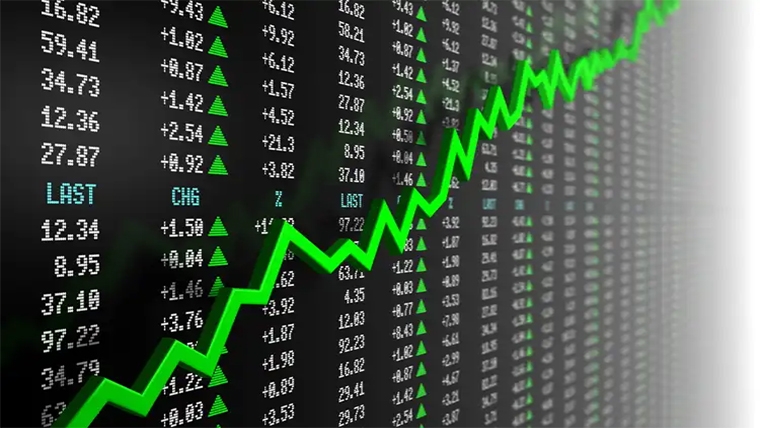
By Stuart Talman, XE currency strategist

The second week of the new year has commenced on a positive footing, risk assets extending gains in the wake of Friday’s encouraging US jobs report.
US equities and more broadly global equities are a sea of green, the two-day rally delivering topside breakouts from the festive season ranges that had constrained price action over the past few weeks.
Friday’s US jobs report struck the desired balance of moderating jobs growth, a lower jobless rated and importantly for inflation, noticeably slower wages growth.
In addition to the jobs data, a significantly weaker than expected US ISM Services PMI (also released FRI.) gave weight to the argument that the Fed is nearing the end of its tightening cycle and that perhaps the market is correct – the second half of 2023 may yield a Fed rate cut.
Opening the week a few pips south of 0.6330, the New Zealand dollar has risen steadily throughout Monday’s sessions, nudging back up through 64 US cents for the first time in a few weeks.
At Friday’s lows, the Kiwi had dopped below 62 US cents, propelled higher following the release of the US jobs numbers. The two-day rally in addition to price action consolidating above the widely followed 200 day moving average suggest that the upside bias may continue.
Recovering from cycle lows at 0.5512 through 4Q,the Kiwi touched its 200d MA in late November, the first time it had done so since April. Piercing through the 200d MA to log 6 month highs in the low 0.65’s in mid-December, NZDUSD then pulled back to be anchored near the indicator through late December and early January.
The 200 day moving average is used to identify long term trends and is used to assist traders to identify key levels in the FX markets. Traders will monitor price action as it approaches, crosses over or fails to break through the 200d MA and used in conjunction with other technical indicators and price patterns, base their entry and exit decisions on this analysis.
Some technical traders will rely solely on signals generated from their chosen suite of technical indicators whilst others will use a mix of technical and fundamental analysis – the macro data and news flow required to align with the technical view to trigger trading decisions.
So, with the Kiwi breaking above its 200d MA, setting up to challenge six month highs, do the fundamentals support a bullish start to 2023 for the Kiwi and other risk assets?

Encouragingly, recent data flow suggests that inflation pressures continue to moderate. The Fed’s desired softening in activity and tighter financial conditions is also evident in housing, retail sales, industrial production and following last week ISM PMIs – activity in both the manufacturing and services sectors.
A modest pullback in activity whilst inflation continues to recede from 40+ year highs is the ideal goldilocks scenario for the Fed, the US economy and the stock market.
It leads the half-glass full crowd to believe the Fed can engineer a soft landing, guiding inflation back down to its 2% target whilst avoiding a US recession....or perhaps engineering a short, shallow recession.
In addition to the recent reassuring data flow, China’s abrupt abandonment of covid-zero and embracing of other market-friendly policies are fundamental developments that also support a risk-on environment.
China’s path to a full re-opening and a return to robust economic growth will no doubt be a bumpy one throughout 2023 and beyond, but in the here and now, the market is looking through the short term pain, focusing on medium to longer term economic prosperity.
The half-glass empty crowd believe more pain is ahead.
They believe that we have entered into a new era of secular inflation, initiated by the pandemic and Russian invasion.....sustained by the forces of de-globalisation.
These periods of improving risk sentiment are nothing more than bear market rallies.....cycle lows have yet to be marked.
Inflation will remain persistently high, meaning that when their predicted deep and protracted recession occurs, the Fed and other central banks will have a tough decision to make – keep rates high to combat secular inflation or cave into high inflation to stimulate economic growth.
In their eyes it’s a lose-lose situation.
Shifting our focus back to the present and the current upside bias for risk assets, Thursday evening’s US CPI report likely dictates whether further upside beckons or the market is reminded that its still far too premature to declare victory in the great inflation battle.
To the day ahead, Tokyo CPI will be in focus given the BoJ’s late December policy shift. BoJ Governor Kuroda’s speech later in the day, also keenly followed for further signs the Japanese central bank is entering a new era of tighter monetary policy.
The major event for the day is Jerome Powell’s speech at the Sveriges Riksbank International Symposium on Central Bank Independence in Sweden. Although this is unlikely to be a platform for the Fed chair to provide any additional insight into the near-term policy path.
Having logged an overnight high a couple of pips above 0.6410, the Kiwi has pared modestly gains to commence Tuesday morning near 0.6380.
Referencing the price action either side of the 14 December high at 0.6514, NZDUSD has some work to do in the 0.6400/50 region before mounting another challenge to 65 US cents.
We favour consolidative price action in the lead up to the US CPI release (0230, FRI.) – the Kiwi to range trade in the region of 0.6350 to 0.6450.
Daily exchange rates
Select chart tabs
Stuart Talman is Director of Sales at XE. You can contact him here.
1 Comments
"The second week of the new year has commenced on a positive footing, risk assets extending gains in the wake of Friday’s encouraging US jobs report"
Notice how the bottom of the US share indexes and the bottom for non usd currencies align in October last year. That's not a coincidence. It's all about perceived risk combined with growing confidence that we have seen the worst.
What did Buffett say, be greedy when others are fearful... The worst financial day during the pandemic, the bottom of the cycle was in March 2020. Had the pandemic ended, no of course not but fears were subsiding from that point.

We welcome your comments below. If you are not already registered, please register to comment.
Remember we welcome robust, respectful and insightful debate. We don't welcome abusive or defamatory comments and will de-register those repeatedly making such comments. Our current comment policy is here.